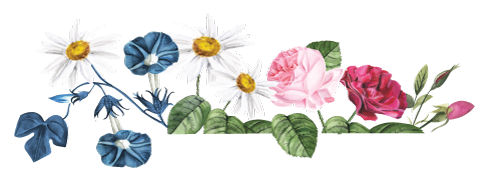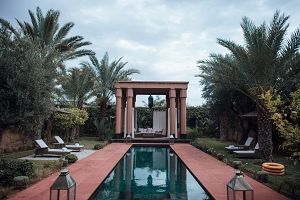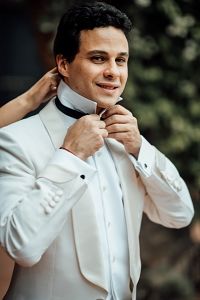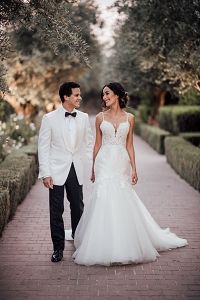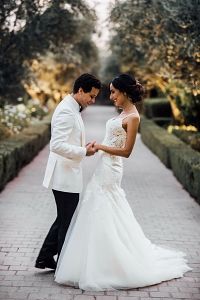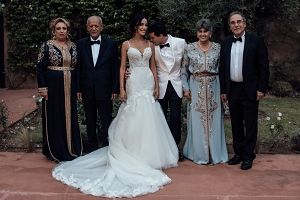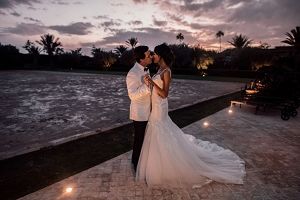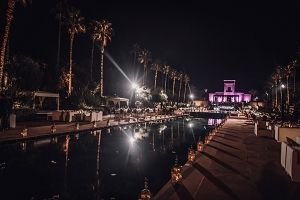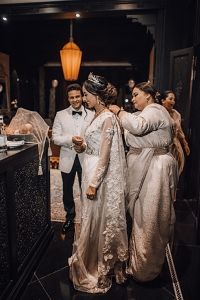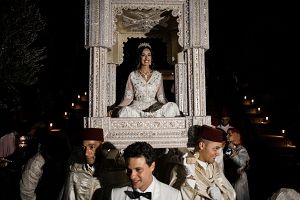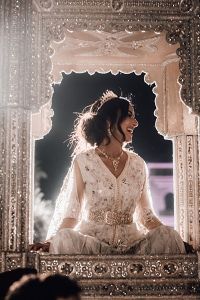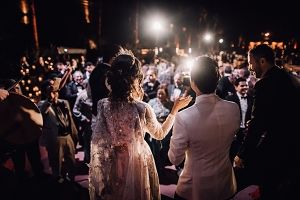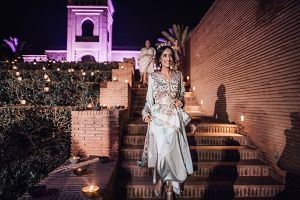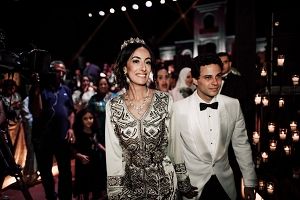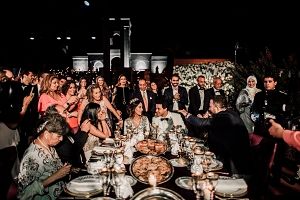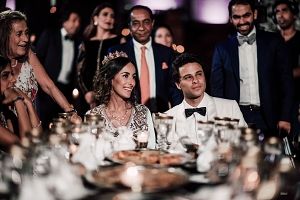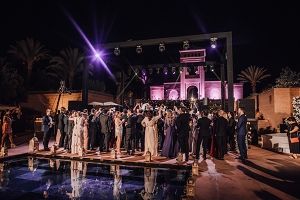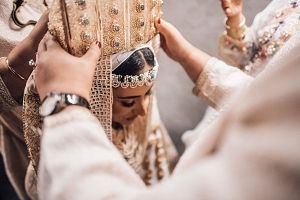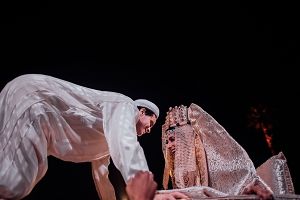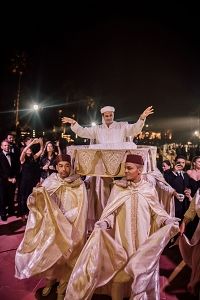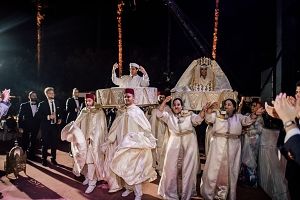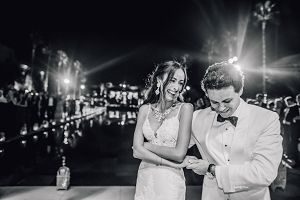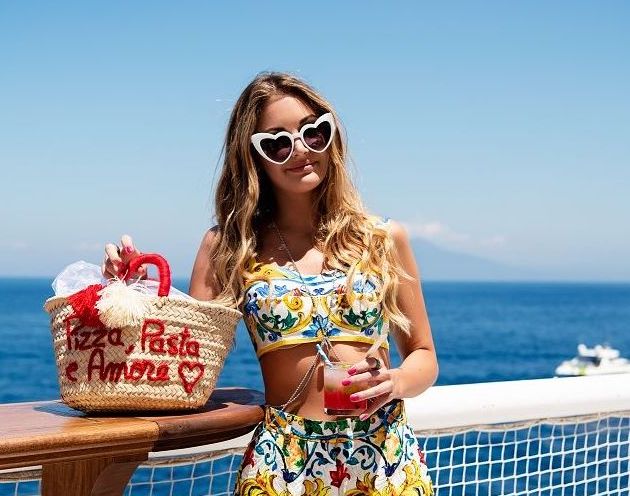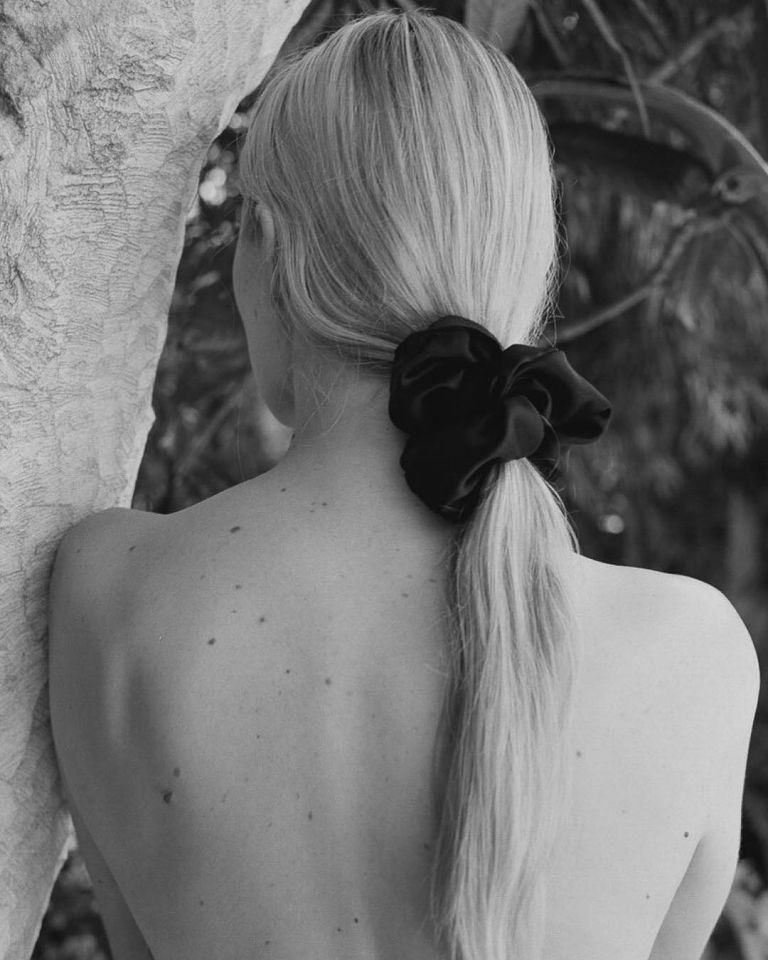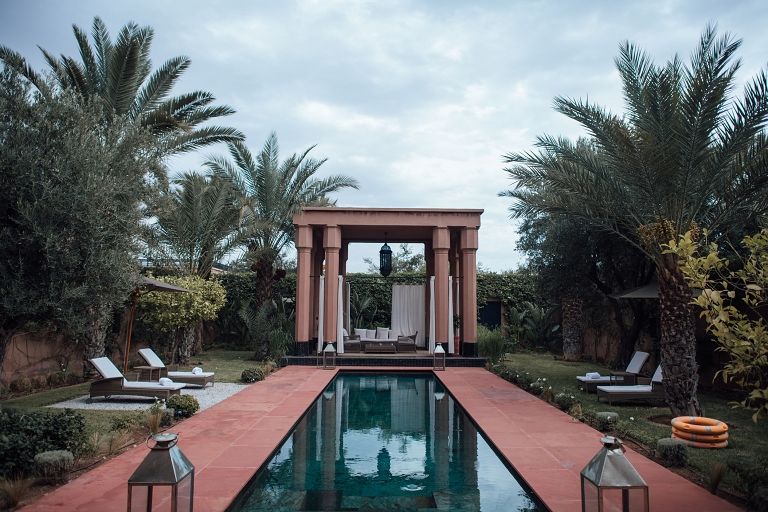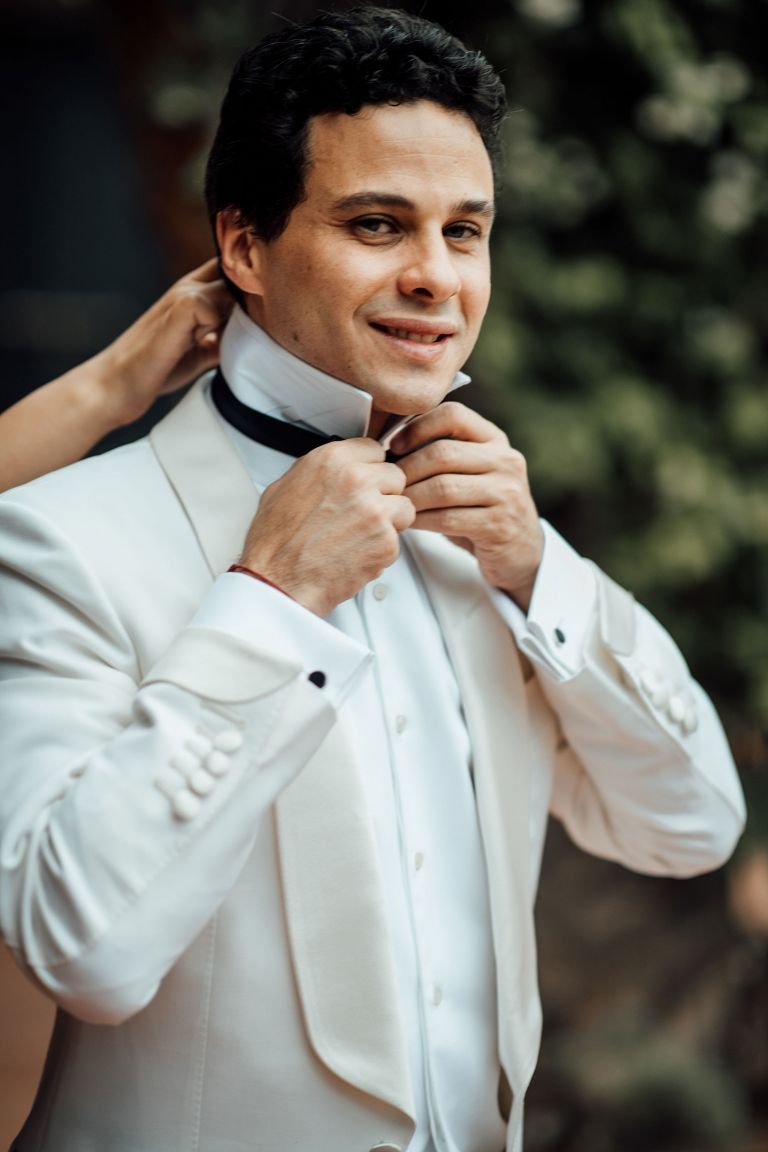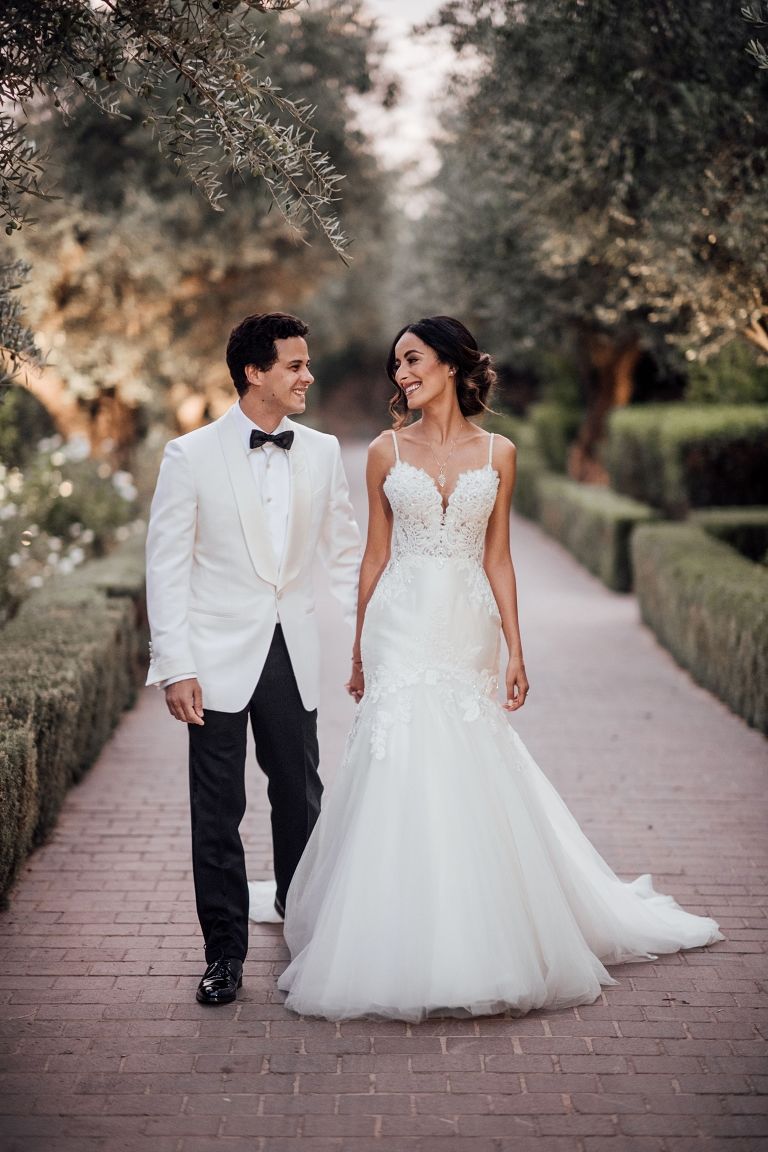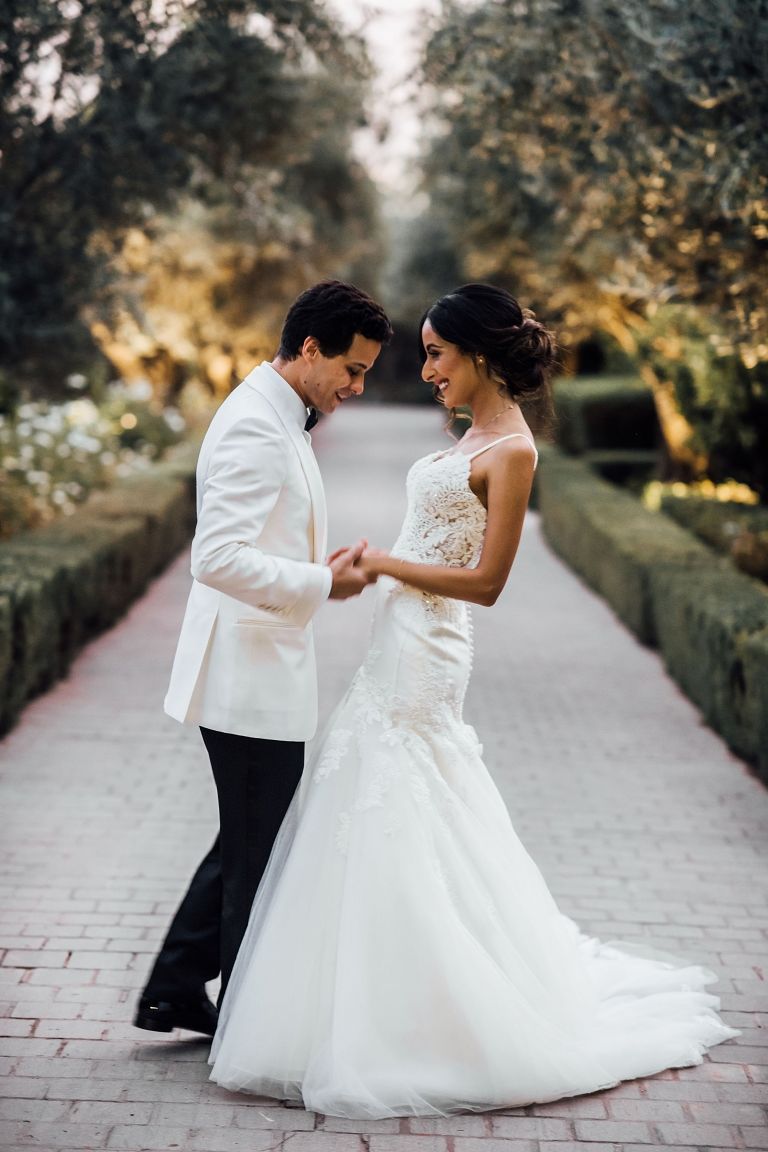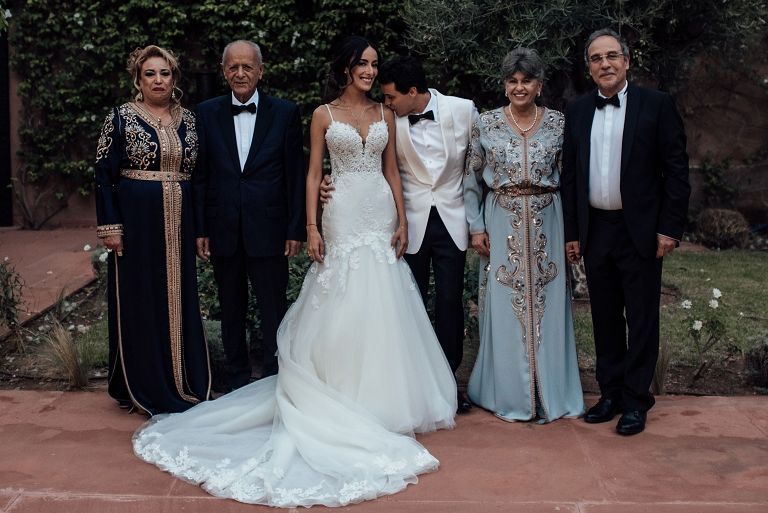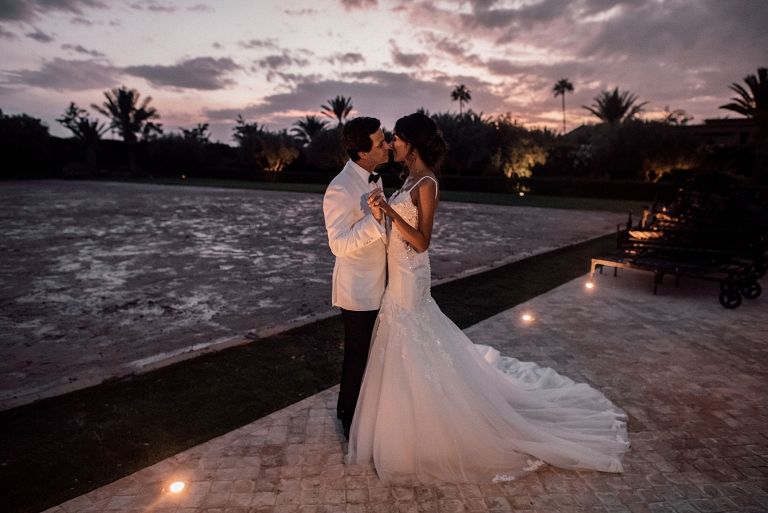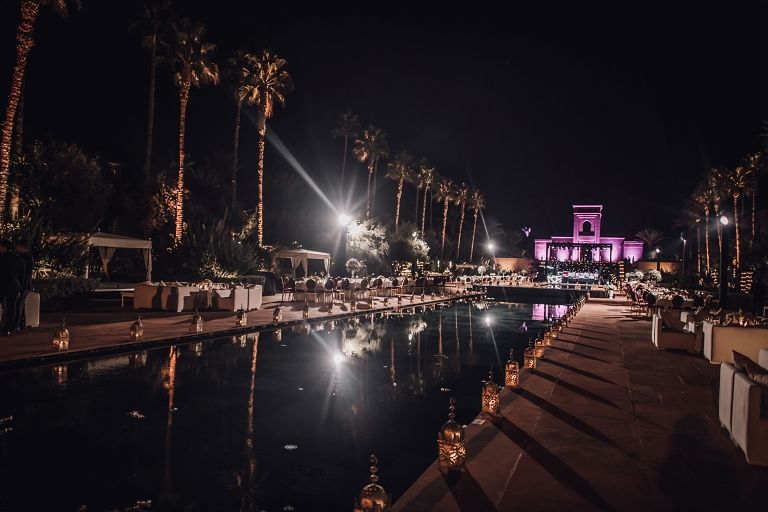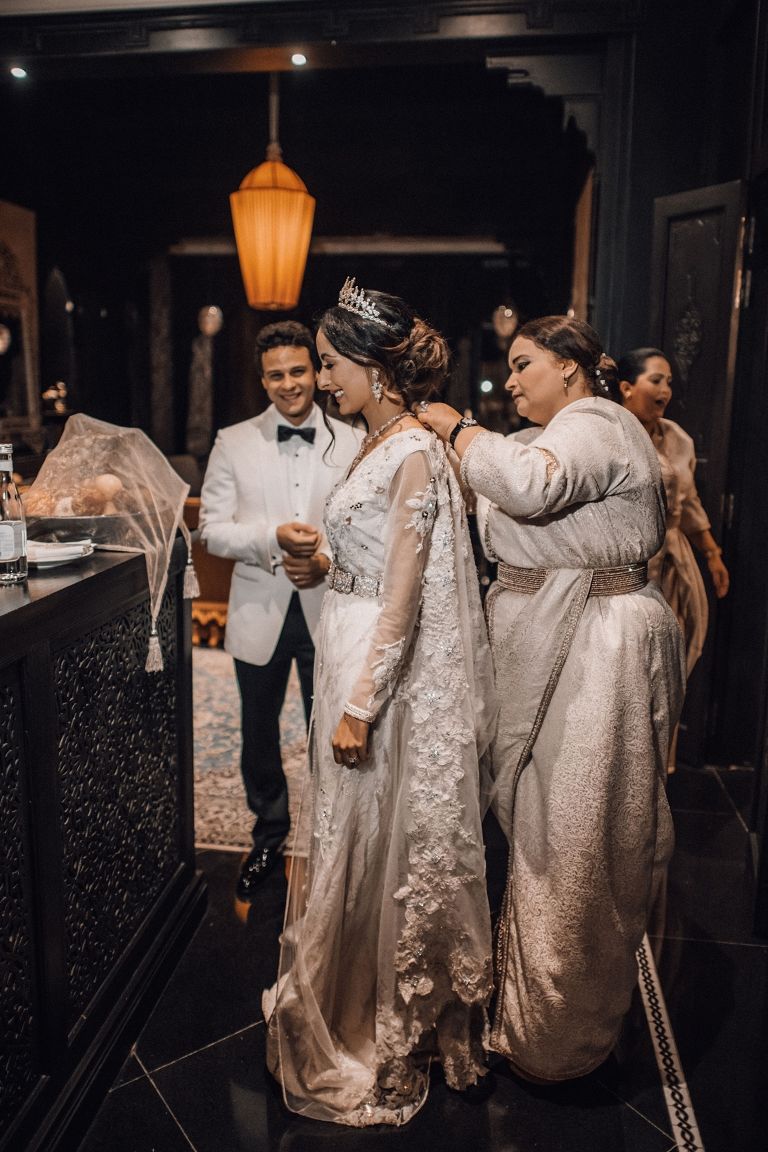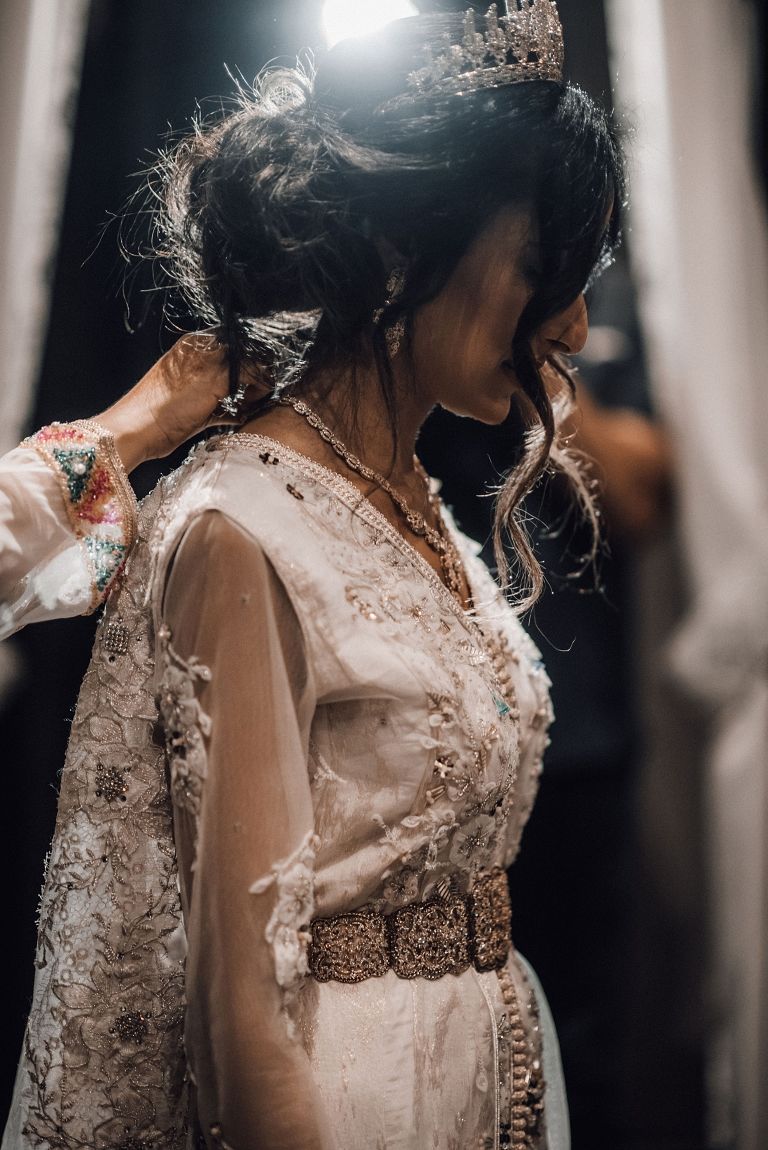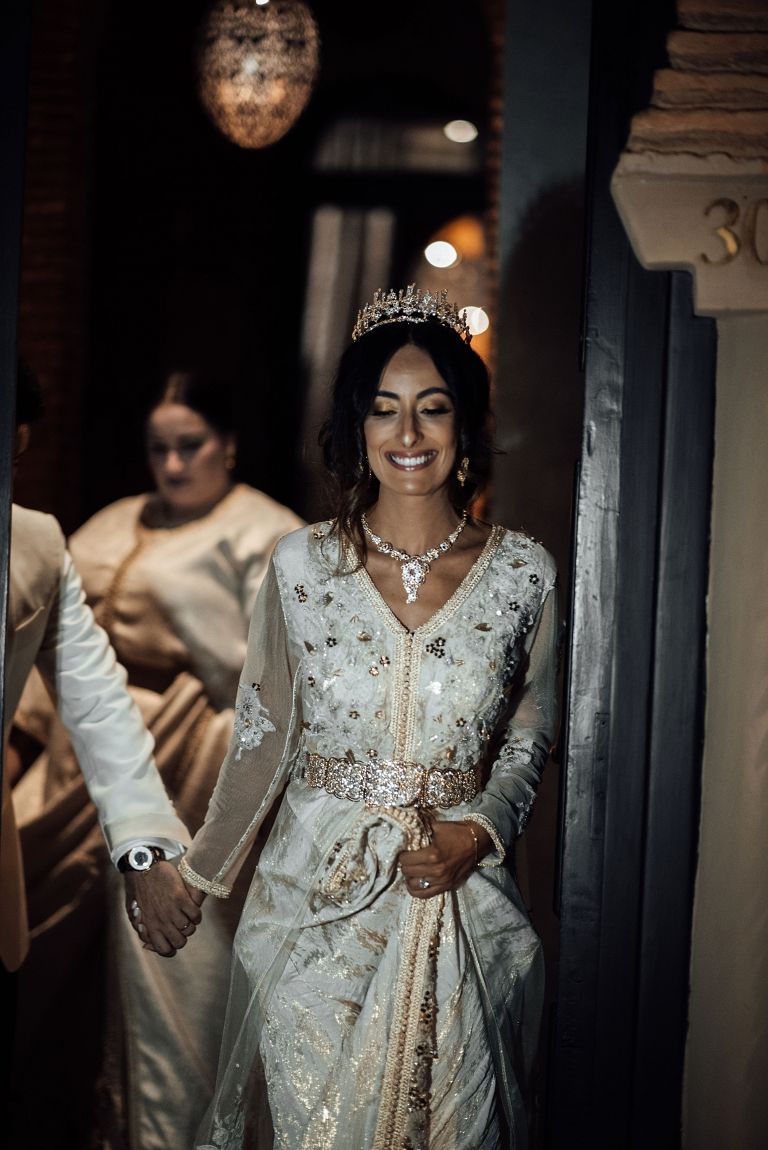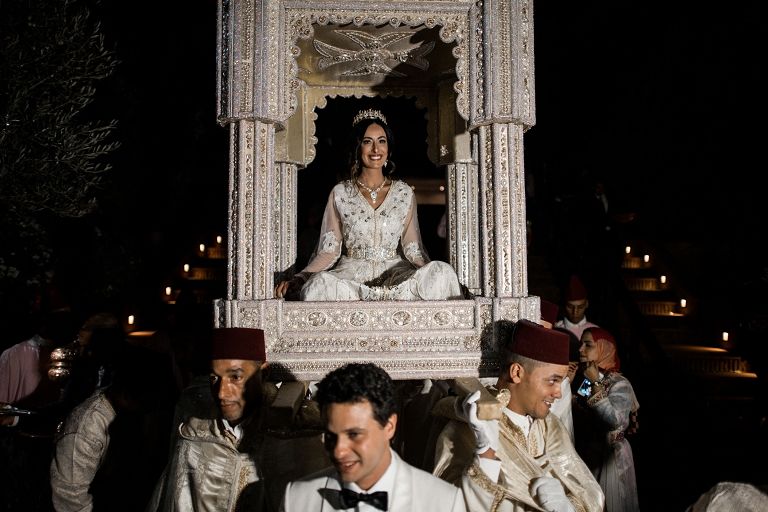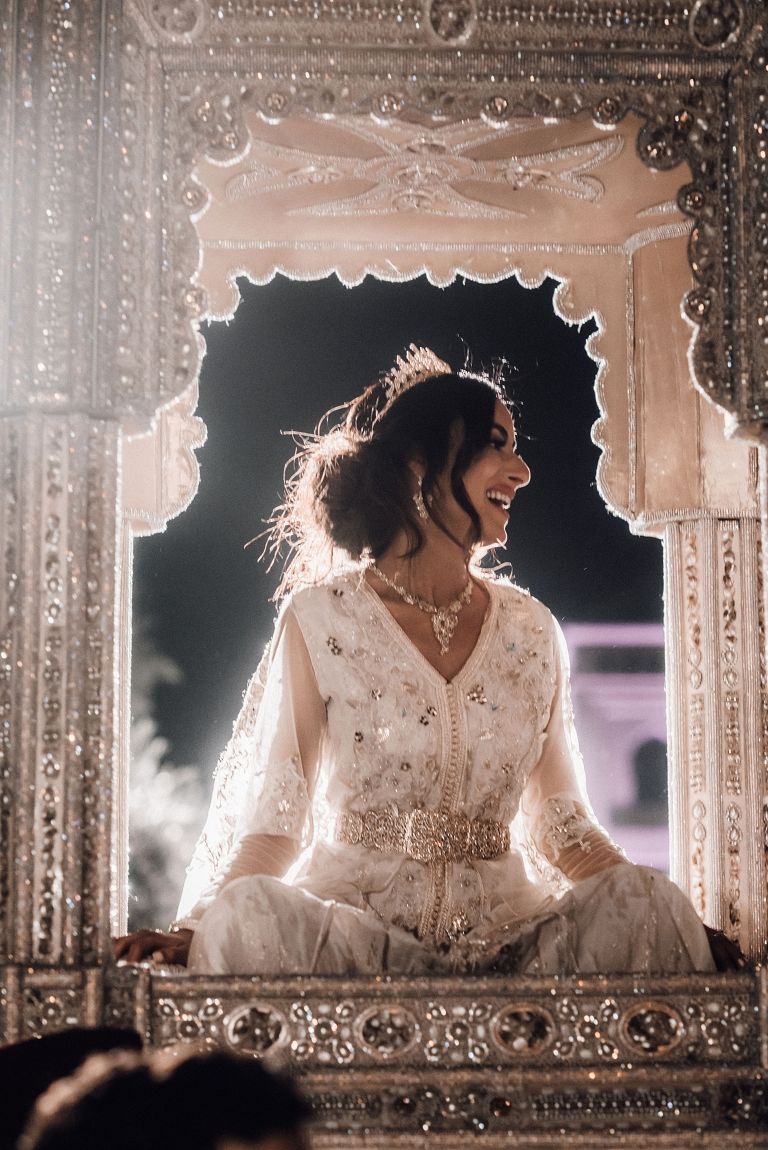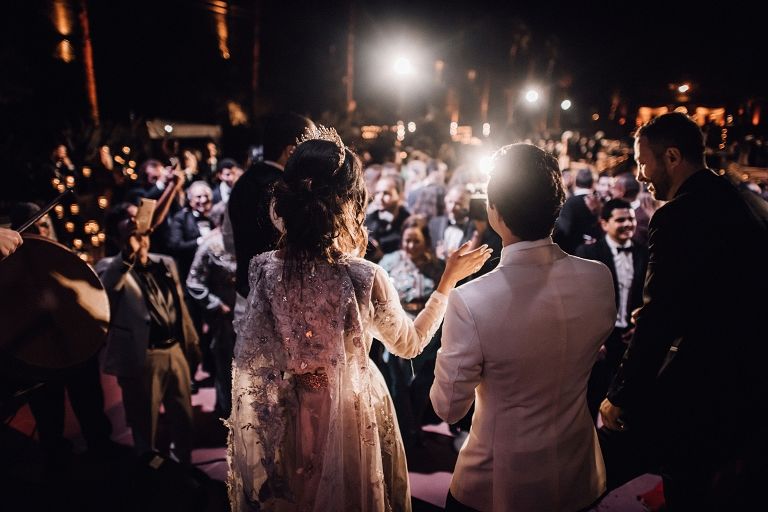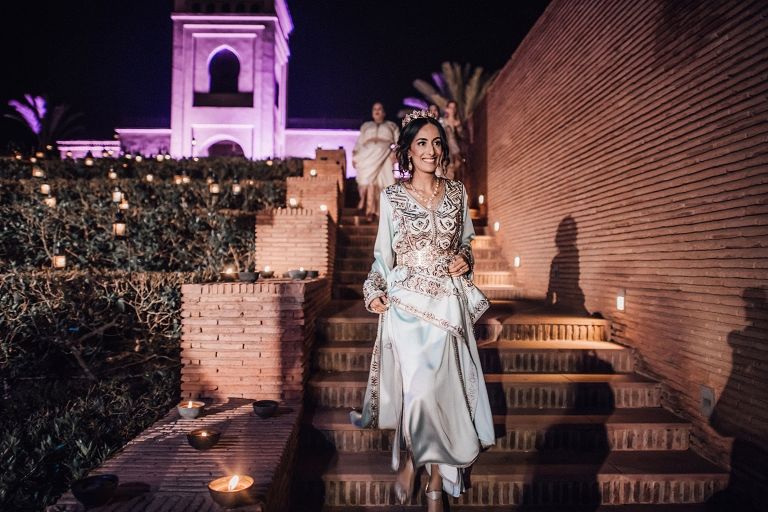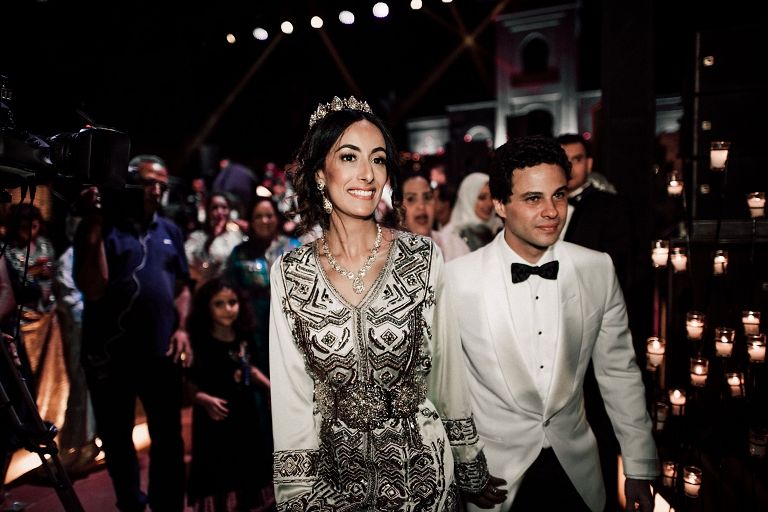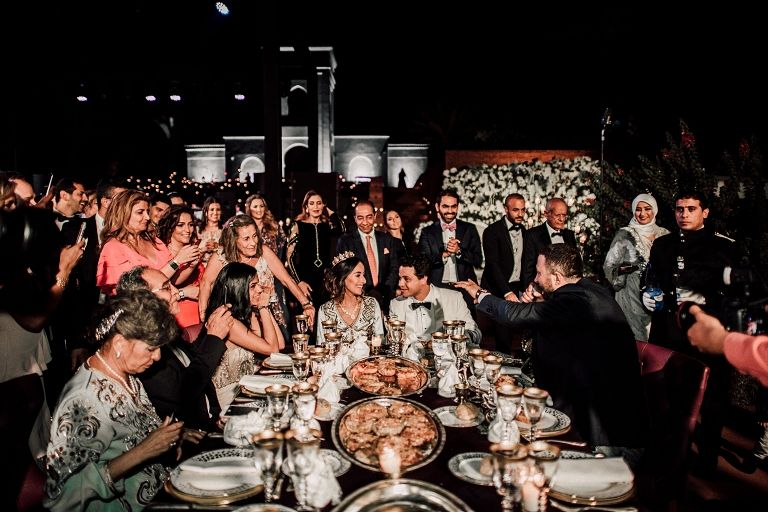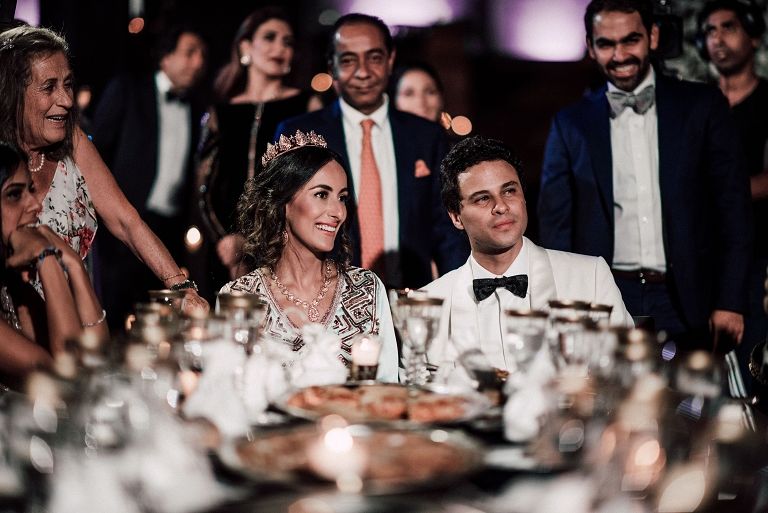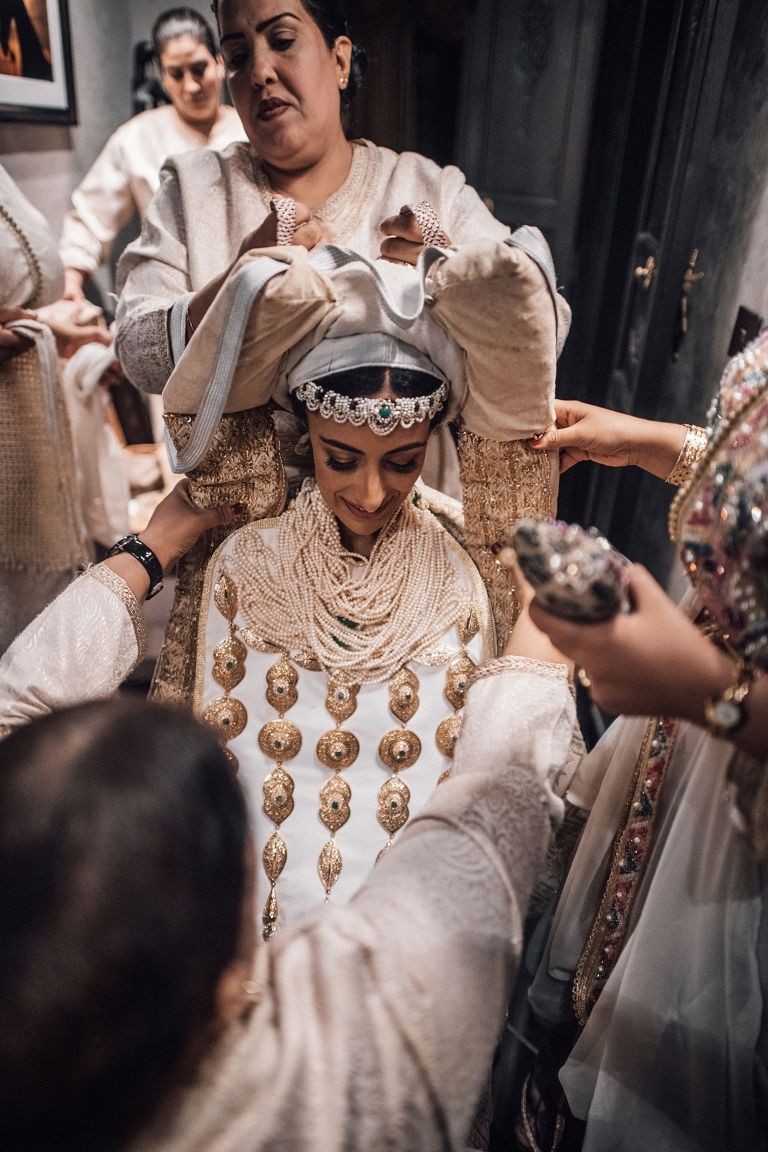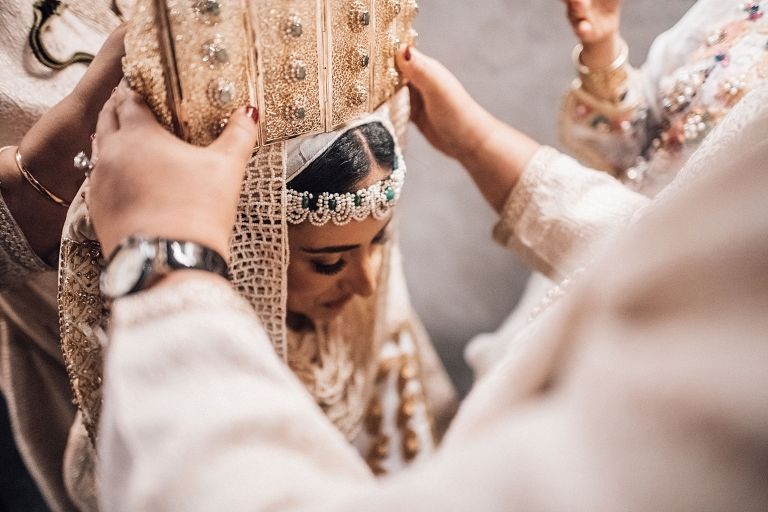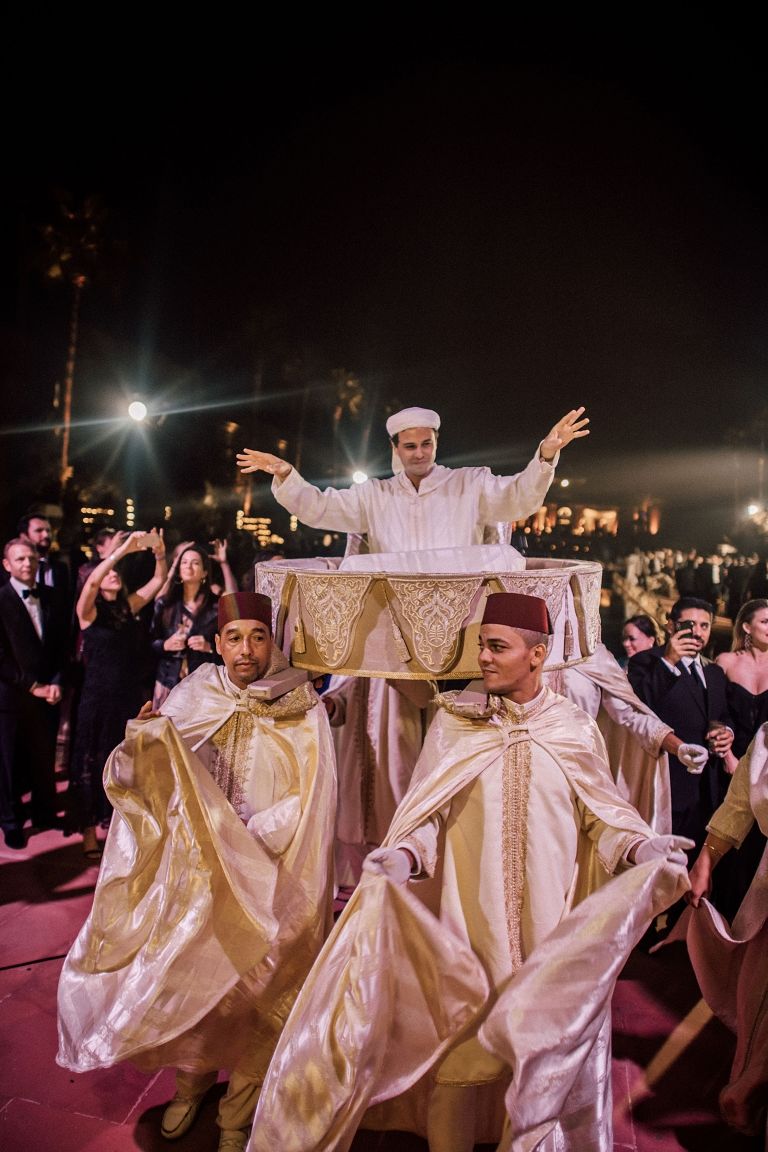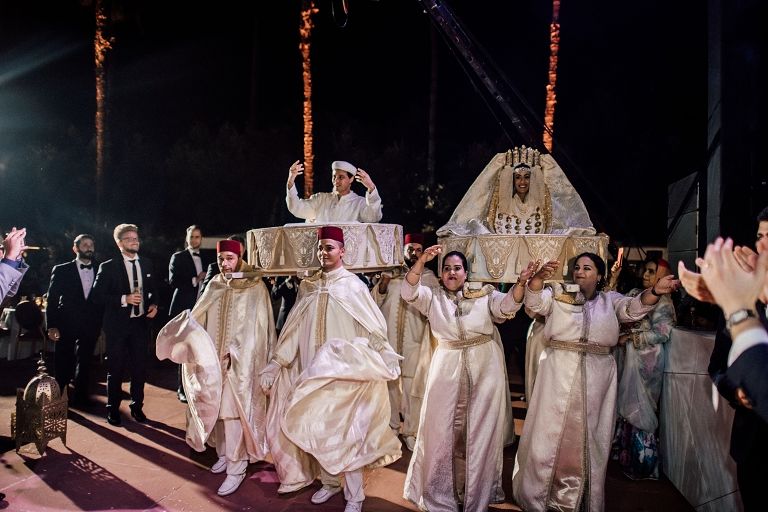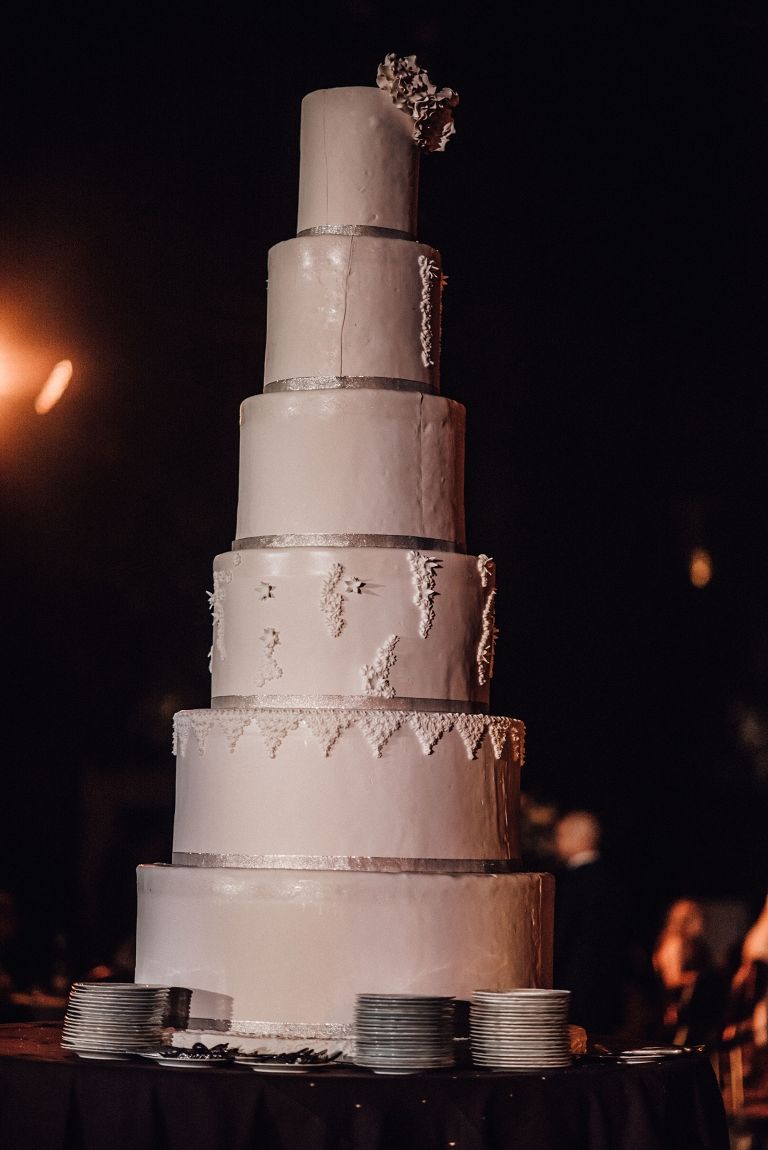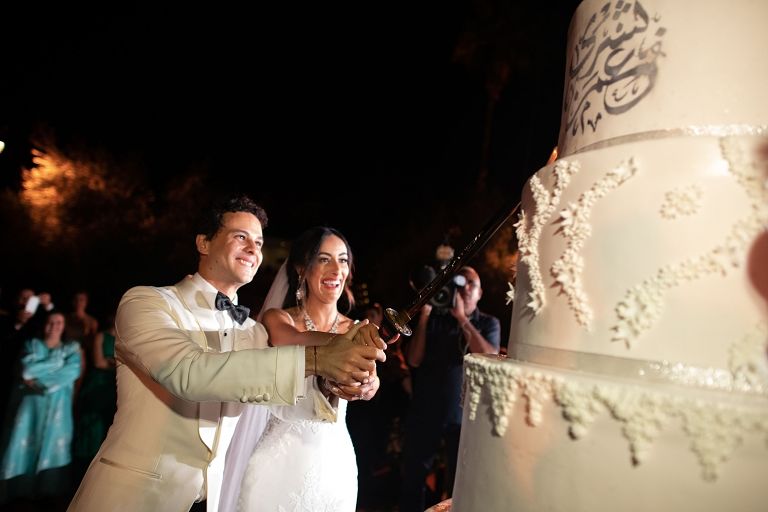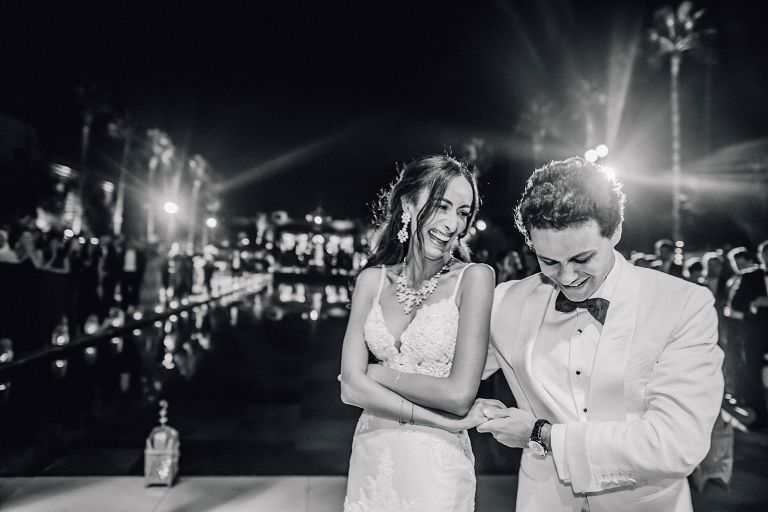Bouchra Ezzahraoui—the co-founder and co-CEO of AUrate New York, a jewelry line that, much like Warby Parker, let’s you try on pieces at home before committing—met venture capitalist Omar Darwazah at a house party. “Omar was the host, and I went there with friends from work,” she remembers. “It happened very quickly. We knew each other for over two years, but only dated for five months.”
The two were in Saint Croix for a weekend away when Omar asked Bouchra to marry him. “He proposed with one of my AUrate rings that he put on the wrong finger,” Bouchra laughs. “I thought he was joking, but he really went down on his knee and asked me to be his wife. I was crying and laughing at the same time. We didn’t tell anyone until much later that year.”
Born and raised in Casablanca, Morocco, Bouchra always wanted to get married in Marrakech. “When we were checking out venues, Palais Selman was the coziest, most authentic one we could find,” she explains. “Fun fact: Leonardo DiCaprio was there celebrating Orlando Bloom’s birthday when we were having dinner at Selman’s restaurant. His girlfriend started playing guitar, and we all sang ‘All of Me’ by John Legend together. When that happened we thought it was a sign!” With very authentic Moroccan architecture and lots of outdoor gardens and water fountains, Palais Selman felt like a secret gem that checked all of Bouchra’s cravings for tradition but with lots of modern amenities.
The wedding weekend was a full on three-day extravaganza, and the couple worked with Maev Events for all of the festivities. “We decided to have a civil ceremony conducted in both Arabic and English for our guests and family to experience,” Bouchra says. The bride’s best friend and business partner, Sophie Kahn, officiated the ceremony in front of 250 guests and recited a short story about how they met, while Omar’s grandfather gave a short speech in both English and Arabic. “It rained a bit, and it made the whole service super emotional,” Bouchra says. “We cried from happiness and danced the rest of the night.”
Bouchra chose white, gold, and pastel colors to go with the setting and designed all of her dresses with a local designer in Casablanca. “I wanted to keep it personal and close to our Middle Eastern roots,” she explains. “My jewelry was all AUrate and pieces that I got from my mother and grandmother. I was very late getting my white dress, but things worked out well!”
Walking down the aisle is a quintessential part of traditional Western nuptials and not common at Middle Eastern and North African weddings, so Bouchra and Omar decided to put their own spin on it. “Our entrance to the wedding remained a surprise for our guests—both in timing and in terms of the schedule of events,” Bouchra says. “The brides’ entrance is a crucial part of the Moroccan ceremony.”
To that end, Bouchra was situated in an amaria, also known as an elegantly roofed platform that’s carried by four men. These men were accompanied by a negate, a troupe of women who chant and sing as the bride enters. They’re the Moroccan version of bridesmaids.
Once the initial entrance was over, Bouchra changed into her second kaftan outfit before joining family members for dinner. “We ate at a table designated for family from both sides while Lebanese performer Read El Omar entertained guests and sang improvised Arabic songs that made references to us by name,” she remembers. The performer had traditional Lebanese drummers and an orchestra accompanying his performance. “After dinner, we danced with guests and then quietly exited the wedding for another outfit change.”
The bride’s third look entailed yet another elaborate handmade kaftan for the Labssa Fassia. The Fassia is a beautiful ornament that Bouchra wore on her head. “It is intentionally heavy to signify the weight of the household carried on the bride’s shoulders,” Bouchra explains. Omar changed from his dinner jacket and tuxedo into a traditional jabador and white djellaba. “We were both carried in two midas, which are round seats, and we were lifted up by the same Samaria bearers. Traditional Moroccan music played as guests gathered around us during the Fassia event. Fassia is a tradition that originated from Res, another imperial city in Morocco.”
After the Fassia, there was a final outfit change. Omar switched back into his dinner jacket and tuxedo, and Bouchra wore the normal Western white wedding dress from here on out. “We cut the cake and had our first dance to John Legend’s ‘All of Me,’” Bouchra says. “A DJ then played a variety of different genres until about 4:00 a.m. It was all so surreal. Guests from everywhere in the world came together to celebrate our love. You really only get this at your wedding and your funeral, and I loved having everyone in the same place. Everything was so new to many of our friends, and I could feel all the fun they were having!”
It all ended with an after-party at the Presidential Villa in the hotel. There, Amine K, a famous Moroccan DJ, entertained guests until the wee hours of the morning. And then, three months after their epic wedding weekend, the newlyweds jetted to India for sightseeing, Nepal for trekking and national park exploring, and finally the Maldives for some much needed R&R.









